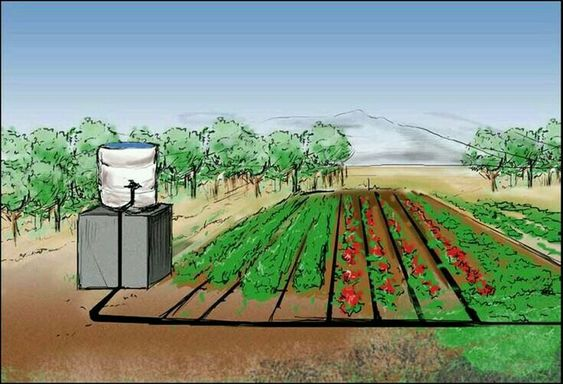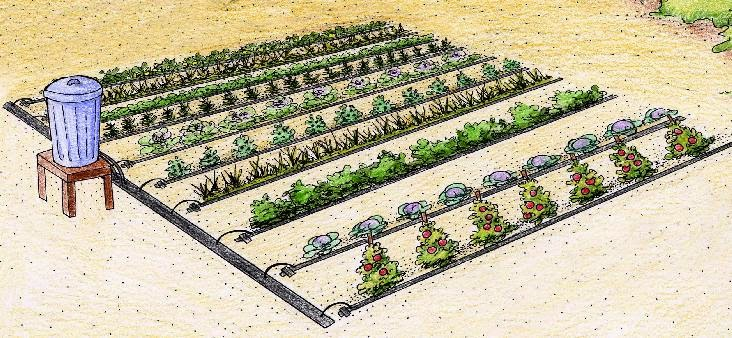In many developing regions and rural communities worldwide, small-scale farmers face a relentless challenge: how to manage water efficiently in areas where every drop counts. Water scarcity doesn’t just mean inconvenience—it can threaten livelihoods, food security, and local economies. Fortunately, innovative yet simple solutions are emerging to address this challenge. One such groundbreaking tool is the Chapin Irrigation Bucket, a game-changer that’s quietly transforming small-scale agriculture with its low-cost, effective approach.
If you’re a gardener, farmer, or someone interested in sustainable farming practices, understanding this simple innovation could inspire you to optimize your own water use or support projects aimed at empowering small farmers. Let’s explore what the Chapin Irrigation Bucket is, how it works, the benefits it offers, and why it’s becoming an essential tool in water-scarce regions around the world.
What is the Chapin Irrigation Bucket?
At its core, the Chapin Irrigation Bucket is a straightforward, gravity-fed water delivery system designed specifically for small-scale farmers. It’s low-cost, easy to assemble, and made from everyday materials—primarily a standard bucket, a connecting hose, and small emitters or drippers. The goal? To provide a reliable and consistent way to water crops without needing complex technology or expensive equipment.
This device is inspired by the principle of drip irrigation, but its simplicity makes it accessible for farmers with limited resources. The idea is that water from a raised bucket slowly drips directly onto the roots of plants. By doing so, it minimizes water wastage and ensures plants get the moisture they need for healthy growth.
How Does the Chapin Bucket Work?
Understanding the mechanics helps appreciate its efficiency. The system operates on the simple law of gravity. Farmers fill the bucket with water and place it on a raised platform—such as a sturdy table, stone, or even a tree branch. The height of this elevation is crucial; the higher the bucket, the more water pressure is generated.
Connected to the bucket is a flexible hose that leads to small emitters or drippers positioned at each plant or row of crops. When the water begins to flow, gravity pulls it through the hose, and the emitters dispense a slow, steady stream of water directly into the soil near plant roots.
This method offers several advantages:

- Consistent watering: The flow rate remains steady, ensuring plants receive regular moisture.
- Minimal water waste: Water is delivered directly to the plant roots, reducing evaporation and runoff.
- Ease of control: Farmers can adjust the height of the bucket or the number of drippers to control the amount of water each plant receives.
Investing just a few minutes to set up this system can lead to big savings in water and labor, making it ideal for small farms, vegetable gardens, or even household backyard plots.
Why Is the Chapin Irrigation Bucket a Game-Changer?
1. Maximizes Water Efficiency
In arid or drought-prone regions, water conservation is paramount. Traditional watering methods like sprinklers or flood irrigation often waste significant amounts of water, especially through runoff, evaporation, or overwatering. The Chapin Bucket’s drip system ensures that every drop counts, going directly where it’s needed most—at the plant’s root zone.
2. Affordable and Easy to Build
One of the most attractive features of this system is its affordability. Farmers can assemble it using locally available items—an old bucket, tubing, and small emitters—avoiding expensive equipment or imported technology. This lowers the barrier for adoption in communities with limited financial resources.
3. User-Friendly and Low Maintenance
The simplicity of its design means even those with minimal technical skills can set up, operate, and maintain the system. Fixing a leak or replacing a dripper is straightforward, ensuring farmers can rely on it daily without worries.
4. Scalable and Adaptable
This irrigation method isn’t one-size-fits-all; it’s easily adaptable to different crop types and garden sizes. Whether watering a small vegetable patch or a bigger farm, farmers can modify the number of buckets, hoses, and emitters to suit their needs.
The Broader Impact on Agriculture
Small-scale farmers are often at the mercy of unpredictable weather and water limitations. The Chapin Irrigation Bucket provides a practical, sustainable solution that can improve crop yields and boost livelihoods. Its ability to conserve water means farmers can grow more with less—and potentially expand their gardens or farms in water-restricted areas.
More importantly, this type of technology aligns with principles of sustainable agriculture. It promotes responsible water use, reduces dependency on external inputs, and can be implemented quickly, even in remote or underserved regions.
Many community projects and development programs are already employing this tool to empower farmers, improve self-sufficiency, and combat food insecurity. It’s a testament to how simple innovations can have far-reaching effects.
Final Thoughts
The Chapin Irrigation Bucket exemplifies how low-tech, high-impact solutions can address complex challenges like water scarcity. Its ease of use, affordability, and efficiency make it a vital resource for small-scale farmers worldwide.
By adopting such simple innovations, communities can move toward more sustainable, resilient agriculture—ensuring food security and economic stability for generations to come. Whether you’re a gardener looking to optimize water use or a development worker supporting rural livelihoods, the Chapin Bucket offers a potent example of how clever, simple ideas can revolutionize farming.

